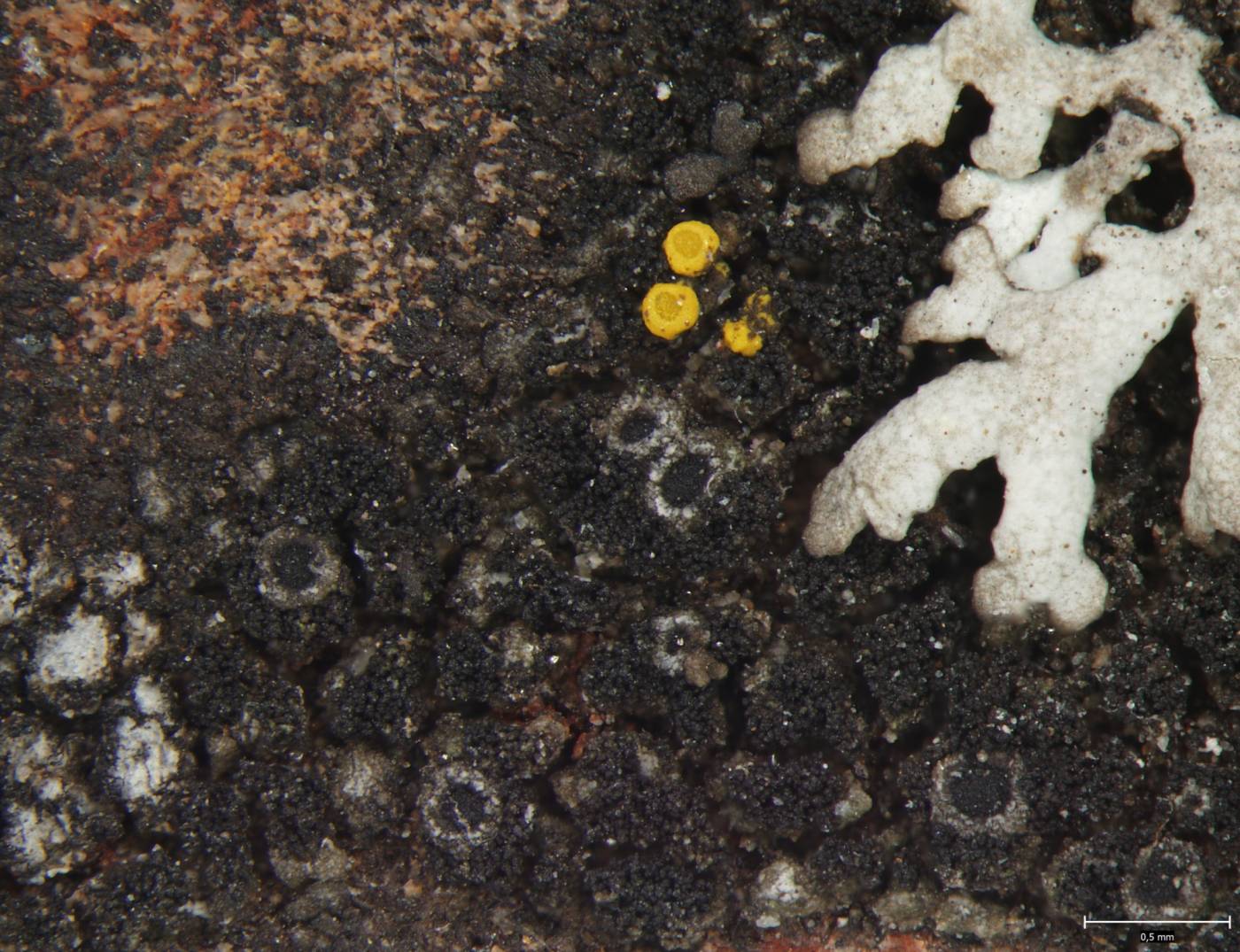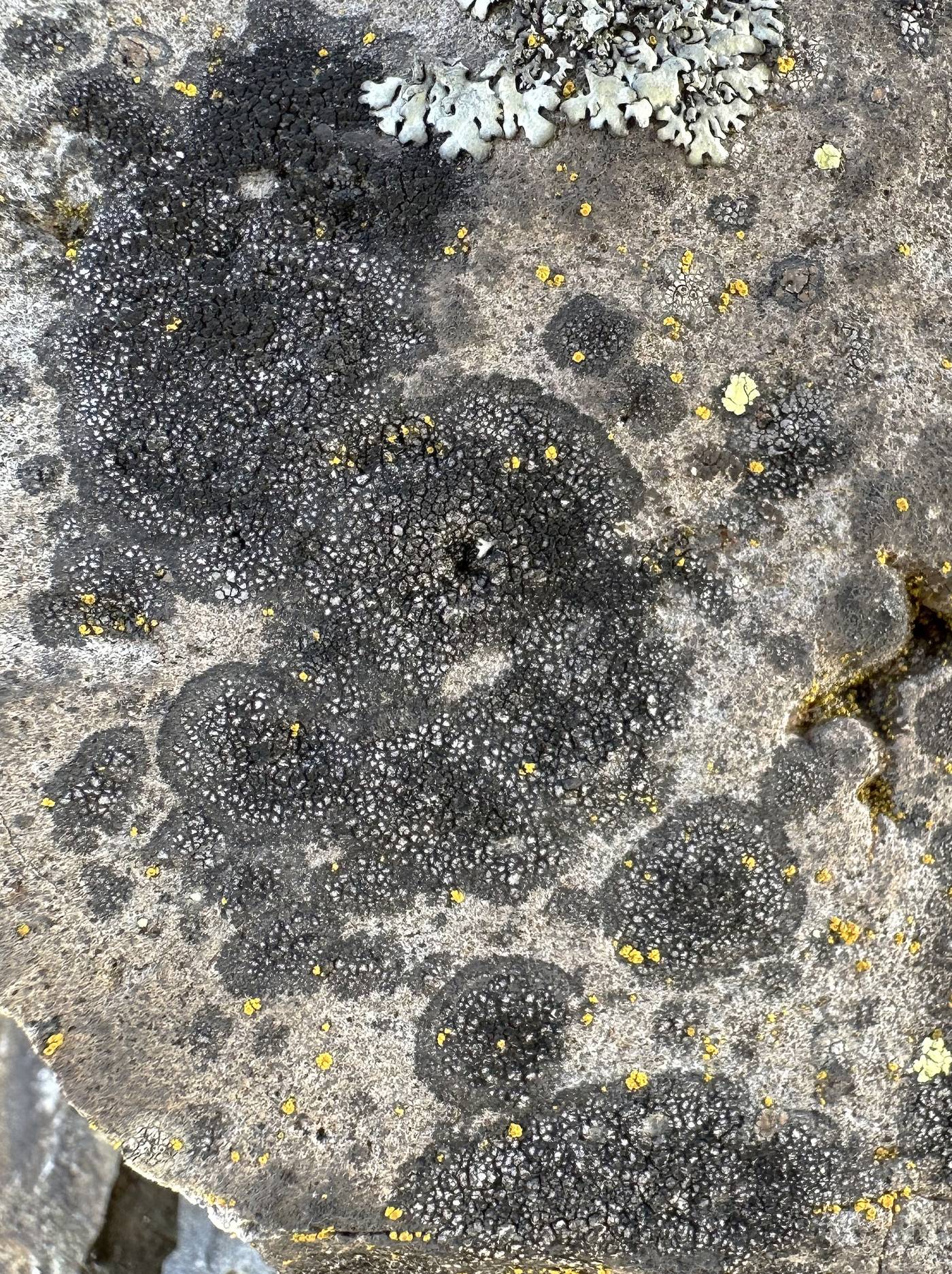Rinodina obnascens has a grey to black blastidiate thallus similar to, for example, Rimularia furvella. It can be recognized with certainty if the lecanorine apothecia with Milvina-type spores are formed. A similar R. furfuracea has Dubyana-type spores. It is thought to be parasitic on Aspicilia lichens on siliceous rocks. The records are still scarce, mainly from south-western Europe (Mayrhofer & Poelt 1979, Mayrhofer 1984). The species is considered to be a Mediterranean-atlantic lichen (Nimis et al. 2018). It was first discovered in the Czech Republic in the Křivoklát region, where it is known from the south-facing rock slope below the Týřov castle (Vondrák et al. 2022). It occurs here quite abundantly (but only in a few square metres) in xerothermic lichen communities of basal rocks together with Caloplaca rubelliana, Lobothallia radiosa and Verrucaria sphaerospora. At this locality it does not appear to be strictly lichenicolous on the genus Aspicilia s. l. It has recently been found in two localities in the České středohoří Hills, where it grows on lichens or directly on rock.
Literature: Mayrhofer H. (1984): Die saxicole Arten der flechtengattungen Rinodina und Rinodinella in der alten Welt. − Journal of the Hattori Botanical Laboratory 55: 327−493. Mayrhofer H. & Poelt J. (1979): Die saxicolen Arten der Flechtengattung Rinodina in Europa. − J. Cramer, Vaduz, 186 p. Nimis P.L., Hafellner J., Roux C., Clerc P., Mayrhofer H., Martellos S. & Bilovitz P.O. (2018): The lichens of the Alps – an annotated checklist. – Mycokeys 31: 1–634.
taxonomic classification:Ascomycota → Lecanoromycetes → Caliciales → Physciaceae → Rinodina
Red List (Malíček 2023):DD – data deficient
Occurrence in the Czech Republic
All records: 5, confirmed 5. One click on a selected square displays particular record(s), including their source(s).

